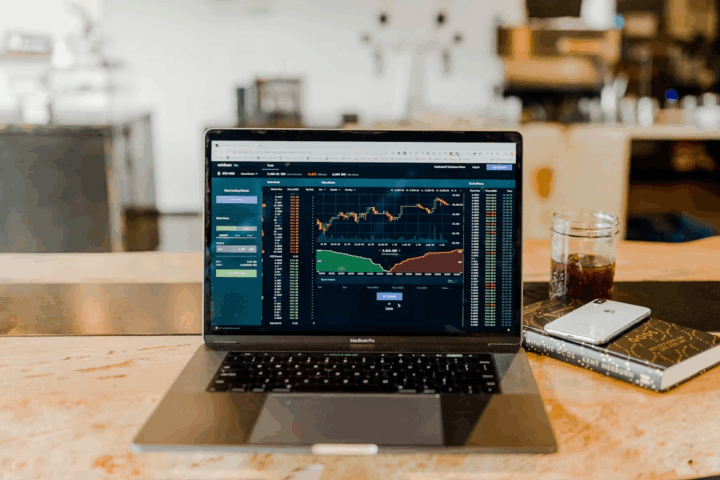Bottom Line Up Front: The best investment strategy for 2025 emphasizes diversification across multiple asset classes, with particular focus on AI-driven technology stocks, high-yield savings accounts, REITs, and emerging markets. Rather than timing the market, focus on long-term investments aligned with your goals and risk tolerance.
The 2025 Investment Landscape
As we navigate through 2025, the investment landscape presents both unprecedented opportunities and unique challenges. High-yield savings accounts, CDs, bonds, funds, and stocks are all considered among the best investments available, but the key is understanding which investments align with your specific financial situation and goals. For those interested in alternative investments, platforms like Aviamasters offer unique opportunities worth exploring.
The current market environment is characterized by uncertainty over tariffs, high interest rates, and sticky inflation, making diversification more crucial than ever. However, investors can expect gains in equities and high-quality fixed income for 2025, despite a slowdown in global economic growth.
Top Investment Categories for 2025
1. High-Yield Savings Accounts and Cash Equivalents
Starting with the safest options, high-yield savings accounts remain attractive in 2025. Rates continue to be high, even following a series of cuts by the Federal Reserve last year. This makes them ideal for:
- Emergency funds
- Short-term goals (less than 5 years)
- Conservative investors who prioritize capital preservation
Expected Returns: 4-5% annually with minimal risk
2. Government and Corporate Bonds
Bonds are experiencing what some experts call a “golden age.” Bonds offer a ballast to a portfolio, usually going up when stocks go down, which enables nervous investors to stay the course with their investment plan.
Why Bonds Work in 2025:
- Provide steady income through interest payments
- Act as portfolio stabilizers during market volatility
- Benefit from potential Federal Reserve rate cuts
Expected Returns: 4-6% annually for high-quality bonds
3. Technology and AI Stocks
The artificial intelligence revolution continues to reshape markets in 2025. The AI landscape experienced significant advancements across various sectors, with the AI software market set to expand from around $295 billion in 2025 to approximately $896 billion by 2029.
Top AI Investment Opportunities:
- NVIDIA (NVDA): Nvidia continues to dominate the AI market with cutting-edge chips, a robust software ecosystem, and advanced networking technologies
- Broadcom (AVGO): Broadcom has emerged as a prominent player in AI infrastructure, leveraging its custom AI chips and VMware software stack
- Cloud Computing Giants: Amazon (AWS), Microsoft (Azure), and Google Cloud are driving investment in generative AI infrastructure
Expected Returns: High volatility but potential for 15-25%+ returns for leading companies
4. Real Estate Investment Trusts (REITs)
REITs offer an excellent way to gain real estate exposure without direct property ownership. As monetary policy normalizes, REIT and global real estate return performance will be more closely tied to underlying operational performance rather than long-term interest rates.
REIT Advantages in 2025:
- Steady dividends: Because REITs are required to pay at least 90% of their annual income as shareholder dividends, they consistently offer some of the highest dividend yields in the stock market
- Inflation hedge potential
- Diversification benefits
Top REIT Categories:
- Industrial REITs (logistics and warehouses)
- Healthcare REITs (benefiting from aging demographics)
- Technology-focused REITs (data centers)
Expected Returns: 6-10% annually with steady dividend income
5. Emerging Markets
For investors seeking growth at reasonable valuations, emerging markets present compelling opportunities. With low valuations and higher growth, EM equities could potentially return 10-15%+ in 2025, outperforming if conditions are favorable.
Key Markets to Watch:
- India (benefiting from demographic trends and economic growth)
- China (recovering from recent challenges)
- Southeast Asian markets (Indonesia, Thailand)
Investment Approaches:
- Emerging market ETFs for diversification
- Individual country funds for targeted exposure
- Emerging market REITs for real estate exposure
Expected Returns: 10-15%+ potential but with higher volatility
6. Dividend Stocks
Dividend stocks often outperform in market downturns because they provide consistent income, attract risk-averse investors, and often hail from stable, recession-resistant industries like utilities and consumer staples.
Best Dividend Categories:
- Consumer staples (Procter & Gamble, Coca-Cola)
- Utilities (stable, regulated income)
- Healthcare (defensive characteristics)
Expected Returns: 7-12% annually with growing dividend income
7. Cryptocurrency (High-Risk, High-Reward)
While volatile, cryptocurrency continues to gain institutional acceptance. 60 percent of respondents believe cryptocurrency will perform even better now that Trump is back in office, with some analysts predicting Bitcoin’s price to top $200,000 in 2025.
Considerations:
- Only invest what you can afford to lose
- Bitcoin and Ethereum remain the most established options
- Consider cryptocurrency ETFs for easier access
Expected Returns: Highly unpredictable, potential for significant gains or losses
Portfolio Allocation Strategies
Conservative Portfolio (Risk-Averse Investors)
- 40% High-yield savings and CDs
- 35% Government and high-grade corporate bonds
- 15% Dividend stocks and REITs
- 10% Broad market index funds
Balanced Portfolio (Moderate Risk Tolerance)
- 20% Bonds and cash equivalents
- 40% U.S. stocks (including tech/AI exposure)
- 20% International stocks (including emerging markets)
- 15% REITs
- 5% Alternative investments (gold, commodities)
Growth Portfolio (Higher Risk Tolerance)
- 10% Cash and bonds
- 50% U.S. stocks (heavy tech/AI weighting)
- 25% International and emerging markets
- 10% REITs
- 5% Cryptocurrency and alternatives
Key Investment Principles for 2025
1. Avoid Market Timing
There is one piece of advice that remains steady even when the market isn’t, and that’s to avoid timing the market or trying to buy the best investment at the right time. It often backfires.
2. Focus on Long-Term Investing
For stock or other high-risk investments, you should aim to leave your money invested for at least five years, which should allow you to ride out any lows.
3. Diversification is Key
After being out of favor for several years, diversification is back in vogue. Don’t concentrate all investments in one asset class or geographic region.
4. Consider Your Financial Situation
Before investing, ensure you have:
- An emergency fund covering 3-6 months of expenses
- Manageable debt levels
- Clear investment goals and timeline
Investment Risks to Watch in 2025
Economic Uncertainties
- Potential recession concerns
- Inflation persistence
- Trade policy changes and tariffs
Market-Specific Risks
- Technology sector concentration
- Real estate interest rate sensitivity
- Cryptocurrency volatility
- Emerging market political risks
Getting Started: Practical Steps
- Assess Your Risk Tolerance: Understand how much volatility you can handle emotionally and financially
- Open Investment Accounts: Consider low-cost brokers offering commission-free trading for stocks and ETFs
- Start with Index Funds: If you’re a beginner, broad market index funds provide instant diversification
- Dollar-Cost Average: Invest regularly regardless of market conditions to smooth out volatility
- Review and Rebalance: Periodically review your portfolio and rebalance to maintain target allocations
Conclusion
The best place to invest money in 2025 isn’t a single asset class or stock—it’s a well-diversified portfolio tailored to your specific situation. Morgan Stanley Research strategists outline why U.S. assets — equities, government bonds and corporate credit — are likely to outperform their non-U.S. counterparts, but international diversification remains important.
Focus on long-term wealth building rather than trying to time market movements. Whether you’re seeking stability through bonds and dividend stocks, growth through technology and emerging markets, or income through REITs, the key is maintaining a balanced approach that can weather various market conditions.
Remember that all investments carry risks, and past performance doesn’t guarantee future results. Consider consulting with a financial advisor to develop a personalized investment strategy that aligns with your goals, timeline, and risk tolerance.
This article is for informational purposes only and should not be considered personalized investment advice. Always consult with qualified financial professionals before making investment decisions.







